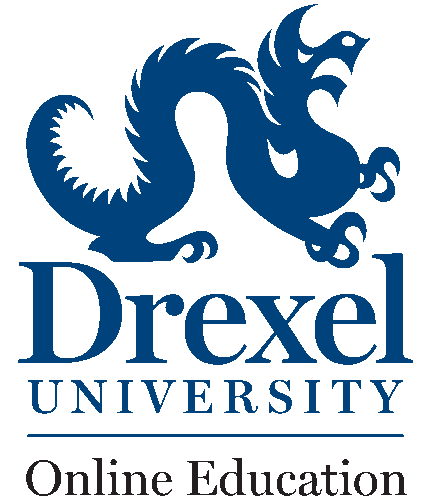


Requirements
and Restrictions
Learning Work?
or Live Event
Can You Learn To Be Creative?
What is the most crucial factor in the success of future leaders? According to a 2010 IBM survey of more than 1,500 CEOs from 60 countries and 33 industries worldwide, the answer, overwhelmingly, is creativity.
Many of the surveyed CEOs were from Fortune 500 companies such as PepsiCo, Ford Motor Company, Disney, Time Warner and K-Mart – all of which employ a “Chief Innovation Officer” or “Chief Creativity Officer” as part of their executive staffs.
Preparing students to think like creative professionals is the goal of Drexel University Online’s Master of Science in Creativity and Innovation program, offered through the School of Education. While many universities are beginning to offer individual courses in creativity, Drexel’s Creativity and Innovation program is one of only a few full creativity degree programs in the country and it is offered completely online. Drexel also offers graduate and undergraduate certificate programs in this subject.
This year, seven students in Drexel’s inaugural online creativity and innovation program will graduate from Drexel University. Most of the students – who are as close as New Jersey to as far away as Taiwan – are planning to come to campus for the commencement ceremony.
“Everyone is inherently creative, but that creativity can be enhanced,” said Fredricka Reisman, PhD, founding director of Drexel’s Creativity and Innovation program and a professor in the School of Education. “Our program teaches techniques for improving creativity – generating original ideas – but it also takes that next step and teaches students innovation – how to implement those ideas.”
The academic program provides students with a deep foundation and contextual background of the field, balanced with real-world application. Through such courses as “Foundations of Creativity,” “Tools and Techniques for Enhancing Creativity” and “Creativity in the Workplace,” students learn the history of research in creativity, as well as learning to understand themselves better and to be aware of their own creative strengths and weaknesses. An outreach of the program even includes a class on “Mediation,” co-taught by Reisman and Nancy Kraybill, JD, a professor in Drexel’s School of Law, which addresses mediation as a creative problem-solving task.
Throughout the program, students acquire skills to conduct methodical analysis of problematic situations in a variety of settings, and devise and implement the best possible solutions. In order to complete each course, students must create a project that shows comprehension of course content. The students have already implemented their ideas in their workplaces in a broad array of fields.
Jared Vollewas able to put his coursework to use in both his jobs: teaching English in Taiwan and working on his online comedy coaching site, www.creativestandup.com.
“After practicing stand-up comedy for eight years, I began studying creativity to get an edge in the industry and quickly found that the psychology of creativity was fascinating,” said Volle. “I see teaching creativity as helping people self-actualize. It’s far more rewarding than simply making people laugh.”
Belinda Florence, a transplant coordinator for the Kidney/Pancreas Transplant Center at Hahnemann University Hospital, was able to implement her class project, the “No Show Committee,” at work. Florence noticed that many patients weren’t showing up for their evaluation appointments to determine candidacy for an organ transplant. She developed a plan to increase patient awareness of and access to the transplant program by isolating the different factors that would cause patients to not show up for their appointments, and then devised creative ways to solve those problems.
After implementing some of the creative solutions – such as changing the reading-level of the text in the patient brochure, printing the informational packet in more engaging colors and creating reminder magnets – the Center saw an increase of 10 to 15 percent in the number of people who kept their appointments.
Patrick Leydenalso put his education into practice in his current workplace, Sho-Aids, Inc., a tradeshow services company based in Sharon Hill, Pennsylvania. In his job as creative liaison manager, Leyden works with clients to create unique and impactful trade show exhibit booth environments.
“Throughout the program, I used my own professional situation to reflect on how creativity and innovation can be applied in a modern workplace,” said Leyden. “Individual creative performance, the creativity of small cross-functional teams and the creative potential of an entire organization were all areas that I explored. Whenever possible, I am an advocate for workplace creativity.”
Terri Zobel, who worked as director of programs and services for the Laurence A. Baiada Institute for Entrepreneurship, found ways to implement her new knowledge through program development for students and entrepreneurs.
One of her class projects addressed trends in the current educational system, particularly the emphasis on cultural conformity and standardized test results. Other projects around this same topic included a program to teach students the value of and tools for building multi-disciplinary teams, an article targeted for a popular parenting publication to raise awareness of these issues and a book chapter that was published last fall as part of the Knowledge Innovation & Enterprise (KIE) Conference Book Series.
“People who take these courses are always surprised at their own creativity,” said Reisman. “They never thought they were creative and then they realize that they have a lot of creative characteristics. As the world becomes more complex, future leaders are going to need to be creative.”
For more information on Drexel’s online Creativity and Innovation master’s program, please visit our creativity page.

© All Rights Reserved
